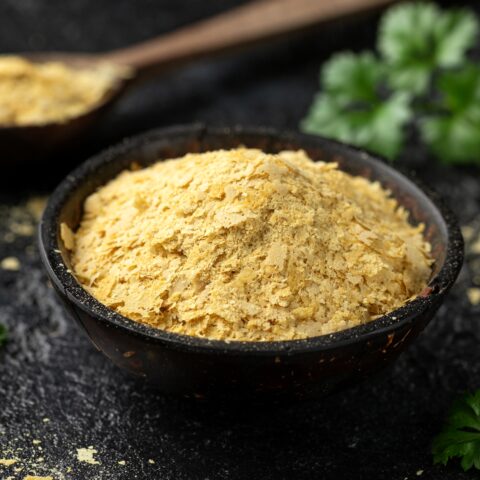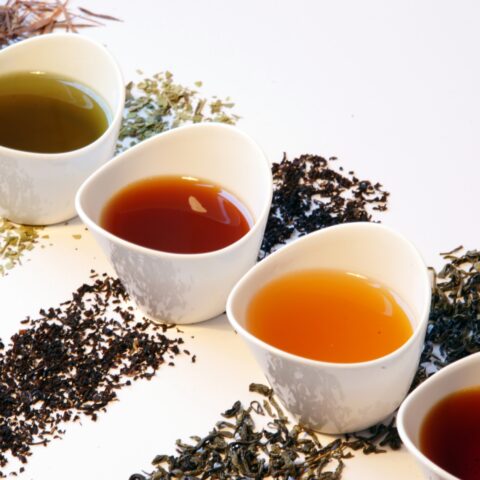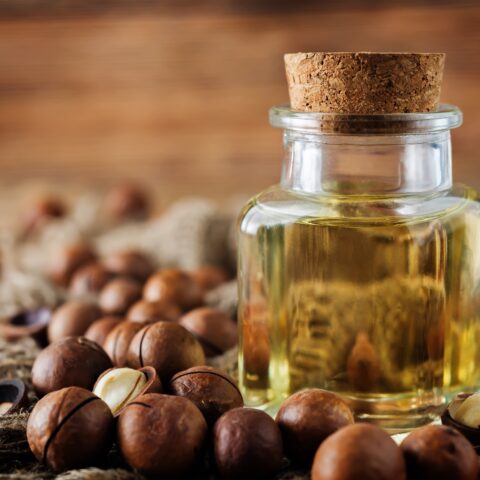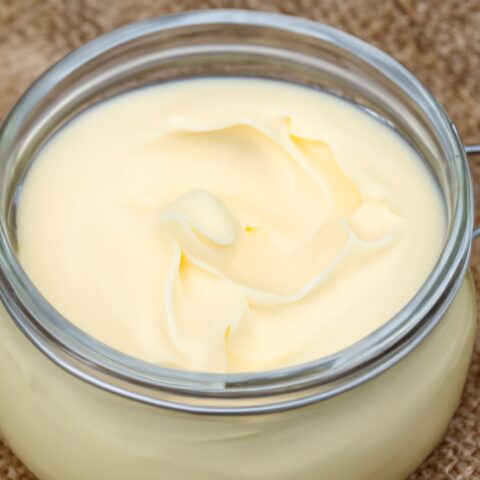Are Peanuts Paleo? See Why This Legume Is Unhealthy.

Everybody seems to love peanut butter. Entire websites can be found dedicated to the pursuit of adding the smooth, salty, and highly palatable spread to seemingly every possible food. But peanuts aren’t actually nuts; they are legumes and all legumes contain unhealthy anti-nutrients. The Paleo Diet restricts legumes like peanuts and peanut products for this reason. Read on for more info about why peanuts are an unhealthy food.
A Brief History of Peanuts
Before the agricultural revolution 10,000 years ago, raw beans and legumes (including peanuts) were seldom consumed because they were extremely difficult to digest. Back then, raw legumes were so difficult to digest that they would actually pass directly through the human digestive tract.
Cooked beans and legumes like peanuts however, became dietary staple for the First Nations people in America and the Aztecs in Central and South America. Spanish explorers brought them back to Europe and their consumption spread into Africa where they’re still found in many traditional dishes.
Fast forward to the 1980s, vegetable oils were thought to be superior to animal fats for cooking and peanut oil quickly became a popular fat for cooking in restaurants and at home. Unfortunately, peanut oil is highly atherogenic, causing arterial plaques and clogged arteries in humans and other animals. Peanut oil is so atherogenic, in fact, that it continues to be used today in research facilities to produce atherosclerosis in animals to study heart disease.1,2
Related: Which Cooking Oils Are Paleo?
The Anti-Nutrients Found in Peanuts
The problem with peanuts as a food is that, like all legumes, they contain anti-nutrients. Anti-nutrients are chemicals that plants naturally produce to defend themselves from foraging animals.
Unlike animals that have sharp teeth or elusive speed to defend themselves, plants don’t roar and can’t run away. They defend themselves from foraging animals via a form of chemical warfare. Anti-nutrients are natural plant-made compounds intended to make plants taste highly unpalatable or extremely uncomfortable for animals to consume. Anti-nutrients include compounds like phytates, lectins, and saponins that act like weapons for plants to defend themselves. They can be mildly to highly problematic in humans. Some beans like raw red kidney beans are so toxic, it takes a mere five beans to trigger adverse symptoms in most people.
Raw, boiled, or roasted, peanuts contain anti-nutrients that are unhealthy for humans. Here is a quick rundown of the most common anti-nutrients found in peanuts and peanut butter. (For a comprehensive list, see Dr. Cordain’s guide to legumes and their anti-nutrients).
Lectins
Lectins are found in abundance in raw legumes like peanuts and grains. They’re the part of the seed that will transform into the leaves when the plant sprouts. Lectins are resistant to human digestion and can travel into the bloodstream unchanged if the digestive system is compromised. Since we cannot digest lectins, our body’s immune system produces antibodies to attack and destroy them. Lectins also damage the lining of the gut wall, which can lead to intestinal hyper-permeability (commonly known as leaky gut), and a whole host of adverse symptoms; fatigue, joint pain, brain fog, allergic reaction, headache, autoimmune response, etc.3,4
Phytates
Like all grains and pseudo-cereals, legumes contain phytic acid that can bind the minerals in food, minimizing the capacity to absorb and utilize them. Phytates prevent the complete absorption of iron, zinc, calcium, magnesium and trace minerals found in plant foods, a major reason for avoiding breads and cereals or significant amounts of peanuts and peanut butter.5 Cooking doesn’t have any impact on the phytate content of food, however allow grains and legumes to sprout or ferment does moderately reduce the phytate concentrations.
Saponins
Saponins are a group of chemical compounds found in abundance in plants. Like lectins, saponins can irritate and damage the lining of the intestinal tract. The gut is home to over 70% of the immune system and irritation from anti-nutrients can promote low levels of chronic inflammation that compromise the integrity of the digestive tract and allow toxins and bacteria to reach the bloodstreams.6 This can lead to immune over-activation and contribute to autoimmune diseases processes.7 Even prolonged cooking (i.e. 2 hours) does not prevent the adverse impact of saponins on health.8
Aflatoxin
Peanuts are highly susceptible to molds and fungus. One fungus in particular – Aspergillus flavus – found in raw peanuts produces a toxin called aflatoxin that is approximately 20 times more carcinogenic than DDT found in pesticides.9 The process of cooking and roasting peanuts does dramatically reduce aflatoxin levels by almost 90%. Unfortunately, Paleo nut staples like pecans, pistachios and walnuts are also susceptible to aflatoxin.10
Peanuts Harm Absorption in the Gut
Digestion of Peanut Proteins
The Protein Digestibility and Corrected Amino Acid Score (PDCAAS) is one of the measures used by researchers to assess the bioavailability of a protein source (i.e. how well we can absorb and utilize it). On average, peanuts have a PDCAAS score about 20-25% lower than animal protein sources, partially due to lower levels of essential amino acids cysteine and methionine and partially due to the anti-nutrients described above.11
Absorption of Essential Minerals
At first glance, legumes like peanuts are a major source of iron – double that found in meat and eggs – but there is more to the story. The form of iron found in plants foods is non-heme, which is much more poorly absorbed than the heme form found in animal protein. The iron in plants is tightly bound to phytates, which can reduce absorption rates by as much as 75-80%.12 As explained above, this doesn’t just occur with iron – absorption of other essential minerals like zinc is also significantly limited by phytates.13
FODMAPs
FODMAPs is an acronym used to describe Fermentable Oligosaccharides, Disaccharides, Monosaccharides and Polyols (now you know why they use the abbreviation!), a collection of short chain carbohydrates that are poorly absorbed in the small intestine. If you struggle to digest FODMAPs, you’re much more likely to suffer with chronic digestive issues (i.e. gas, bloating, constipation or loose stool, etc.) or irritable bowel syndrome (IBS).14,15 In short, if you struggle with digestive issues regularly consuming beans or legumes can exacerbate your symptoms.
Are There Benefits to Eating Peanuts?
Fans of legumes and peanuts argue that they are both decent sources of many nutrients. On-paper, they contain 18g of protein per half cup along with 36g of fat, half of which is healthy monounsaturated fat (MUFA) in the form of oleic acid. Peanuts are also a good source biotin, niacin, folate, vitamin E, and polyphenols. A half-cup of peanuts also provides 6g of fiber, which keeps your bowels regular and supports the growth of healthy gut bacteria. However, off-paper, the anti-nutrients in peanuts reduce the absorption of many of these nutrients.
An international team of researchers investigated more than 200,000 people across the globe and concluded those who regularly ate peanuts (and other nuts as well) were much less likely to have died of any cause — in particular heart disease — over the study period than those who rarely ate nuts.16 It’s important to point out however, that the study looked at overall nut consumption and didn’t differentiate peanut consumption. A previous Harvard-led studies – the Nurses’ Health Study and the Harvard Professionals Follow-up Study – found similar results but also included ALL nuts and not just peanuts.
A few studies have however found benefits of regular peanut consumption. One showed that peanut butter can cut cardiovascular disease risk by 20% and another demonstrated that eating peanuts more than twice weekly reduced colon cancer rates by 58% in women and 27% in men.17,18,
The Bottom Line on Peanuts
By definition, peanuts are legumes (not nuts) and not Paleo because they are unhealthy to eat. Because of the anti-nutrient properties, cutting peanuts out of your diet is likely your best bet, especially if you struggle with digestive problems, an inflammatory or autoimmune condition.
However, if you’re a peanut butter lover and removing peanut butter completely from your diet is a deal-breaker, then the occasional peanut butter or peanut snack is not a bad option as part of your 15% non-Paleo eating (especially compared to the sugar and processed carb-laden snacks that fill the shelves – those are definitely NOT Paleo either!). Just remember that cooking with peanut oil should still be completely excluded due to its highly toxic impact on the body.
References
[1] Wissler RW et al. Aortic lesions and blood lipids in monkeys fed three food fats. Fed Proc 1967;26:371.
[2] Kritchevsky D et al. Influence of native and randomized peanut oil on lipid metabolism and aortic sudanophilia in the vervet monkey. Atherosclerosis 1982;42:53-58.
[3] Caron, M. & Steve, A.P. Lectins and Pathology, Taylor & Francis, 2000, London.
[4] Chrispeels, M.J. & Raikel, N.V. Lectins, lectin genes, and their role in plant defense. Plant Cell 3, 1-9, 1991.
[5] Couzy F, et al. Effect of dietary phytic acid on zinc absorption in the healthy elderly, as assessed by serum concentration curve tests. Br J Nutr. 1998 Aug;80(2):177-82.
[6] Gee JM, et al. Effect of saponin on the transmucosal passage of beta-lactoglobulin across the proximal small intestine of normal and beta-lactoglobulin-sensitised rats. Toxicology. 1997 Feb 28;117(2-3):219-28.
[7] Fasano A. Leaky gut and autoimmune diseases. Clin Rev Allergy Immunol. 2012 Feb;42(1):71-8.
[8] Ruiz RG, et al. Effect of soaking and cooking on saponin content and composition of chickpeas (Cicer arietinum) and lentils (Lens culinaris). J Agric Food Chem 1996;44:1526-30.
[9] Caster WO, et al. Dietary aflatoxins, intelligence and school performance in southern Georgia. Int J Vitam Nutr Res.1986;56(3):291-5.
[10] Park DL. Effect of processing on alfatoxin. Adv Exp Med Biol. 2002;504:173-9.
[11] FAO/WHO Expert Consultation. Protein Quality Evaluation. Food and Agricultural Organization of the United Nations, FAO Food and Nutrition Paper 51, Rome.
[12] Hurrell RF, et al. Soy protein, phytate, and iron absorption in humans. Am J Clin Nutr. 1992 Sep;56(3):573-8.
[13] Couzy F, et al. Effect of dietary phytic acid on zinc absorption in the healthy elderly, as assessed by serum concentration curve tests. Br J Nutr. 1998 Aug;80(2):177-82.
[14] Ong, DK; et al. Manipulation of dietary short chain carbohydrates alters the pattern of gas production and genesis of symptoms in irritable bowel syndrome. Journal of gastroenterology and hepatology”. J Gastroenterol Hepatol. 2010;25 (8): 1366–1373
[15] Halmos EP, et al. A diet low in FODMAPs reduces symptoms of irritable bowel syndrome. Gastroenterology. 2014; 146 (1): 67–75.e5.
[16] Luu HN, et al. Prospective Evaluation of the Association of Nut/Peanut Consumption With Total and Cause-Specific Mortality. JAMA Intern Med. 2015;175(5):755-766.
[17] Blomhoff R, et al. Health benefits of nuts: potential role of antioxidants. Br J Nutr. 2006 Nov;96 Suppl 2:S52-60.
[18] Yeh C, et al. Peanut consumption and reduced risk of colorectal cancer in women: a prospective study in Taiwan. World J Gastroenterol. 2006 Jan 14;12(2):222-7.




